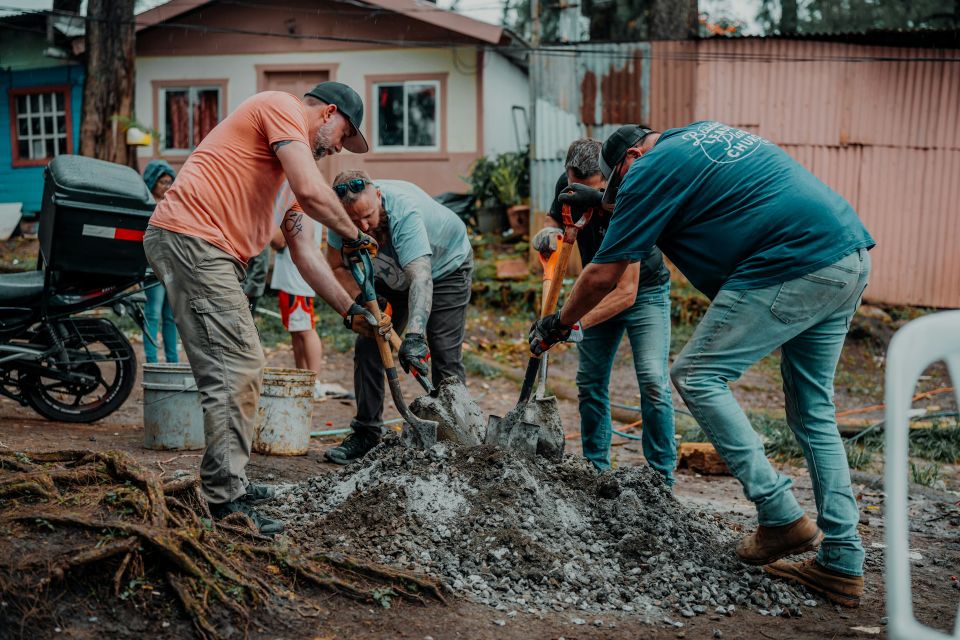Soil cement is a popular choice in construction due to its ability to create durable and strong surfaces by mixing soil, cement, and water. It's widely used for building roads, pathways, and even in some foundation projects. But what happens when this reliable material doesn't set the way it's supposed to? There can be frustrations, setbacks, and additional costs if the soil cement doesn't harden correctly.
When soil cement doesn't set right, it can be due to a number of reasons. Problems such as inadequate mixing, wrong water content, or even environmental challenges like unexpected weather changes can all play a part. Understanding the root causes helps in figuring out how to fix these issues. With the right knowledge, one can ensure that projects proceed smoothly, saving both time and resources.
Causes of Improper Soil Cement SettingWhen tackling soil cement that doesn't set properly, several common issues may be responsible. Addressing these causes can be transformative in avoiding future setbacks.
1. Inadequate Mixing- Mixing is crucial in creating a uniform material. Poor mixing leads to uneven distribution of cement and soil particles. This means certain areas won't bond as intended, leading to weak spots in the construction.
2. Improper Water Content- The right balance of water is essential in the mix. Too much results in a soupy mixture that won't harden properly, while too little prevents the cement from activating effectively. Either way, the soil cement might end up crumbly or overly soft.
3. Environmental Factors- Weather plays a significant role in setting soil cement. Fluctuating temperatures, unexpected rain, or strong winds can disrupt the setting process. These elements can lead to uneven curing, resulting in a surface that is neither stable nor durable.
4. Sub-Grade Issues- The underlying soil, or sub-grade, needs to be stable. If it's weak or unstable, it can shift during the setting phase, causing cracks or incomplete setting. Ensuring a solid sub-grade is a key step in supporting the upper layers properly.
Understanding these common pitfalls helps in diagnosing and addressing issues when soil cement doesn't behave as expected. While some may seem straightforward, taking the time to thoroughly prepare and account for these factors can mean the difference between a successful project and costly delays.
Fixes for Soil Cement Setting ProblemsOnce you identify the causes of improper soil cement setting, the next step is addressing them effectively. Proper solutions ensure your construction project stays on track and possesses the durability it's meant to have.
Correcting poor mixing can make a big difference. The solution lies in using the right equipment to achieve thorough blending. Ensure all components are evenly distributed to avoid weak spots. Investing in quality machinery and training for operators can lead to significant improvements.
When water content is off, adjustments are essential. Begin by testing the soil moisture before mixing and add water gradually. Aim for a consistency that supports easy spreading yet holds its shape. Regular checks during mixing help maintain the right level, ensuring the mixture cures properly.
Weather and environmental conditions can't be controlled, but you can adapt your approach. Check forecasts and plan your work around extreme weather. Protect your site with coverings or adjust your schedule to work during favorable conditions. Timing can mitigate many of these environmental hurdles.
Lastly, a stable sub-grade provides solid support for your project. Test the existing soil and strengthen it if necessary. Techniques such as compacting, using gravel, or employing a geo-grid can improve sub-grade strength. Ensuring a sturdy base is fundamental to successful soil cement setting.
When to Seek Professional HelpSometimes, despite the best efforts, soil cement projects encounter challenges that require professional expertise. Recognizing when to bring in the experts can prevent further complications and cost overruns.
Here are some signs it's time for professional intervention:
- Persistent setting problems that persist despite efforts.
- Complex environmental conditions beyond basic planning.
- Large-scale projects requiring specialized equipment and expertise.
Bringing in skilled professionals doesn't just solve existing issues; it also provides long-term benefits. Experienced teams come equipped with the knowledge and tools needed for efficient and effective solutions. They not only help in rectifying current problems but also in optimizing future projects by sharing invaluable insights and techniques.
Ensuring Long-Term Success with Soil CementPlanning for the future is as crucial as addressing present challenges. Maintain your soil cement projects with routine checks to catch early signs of wear or setting issues. Scheduled inspections ensure longevity and consistent performance.
Think about strategies that protect your investment over the long haul. Quality control during the initial phase sets a strong foundation. Regular maintenance coupled with professional consultations keeps things on the right track.
By tackling the root causes and applying appropriate solutions, you ensure the reliable setting of soil cement. With continued attention to detail and the willingness to seek help when needed, your projects can sustain their integrity and functionality, fortifying the ground beneath them for years to come.
For comprehensive support with your construction needs, trust the experts at Terra-Firma Stabilization & Reclamation. Our tailored
soil stabilization services address improper soil cement setting, ensuring your projects stand the test of time. Contact us today to collaborate on creating durable, stable foundations that support your vision and keep your projects on course.

